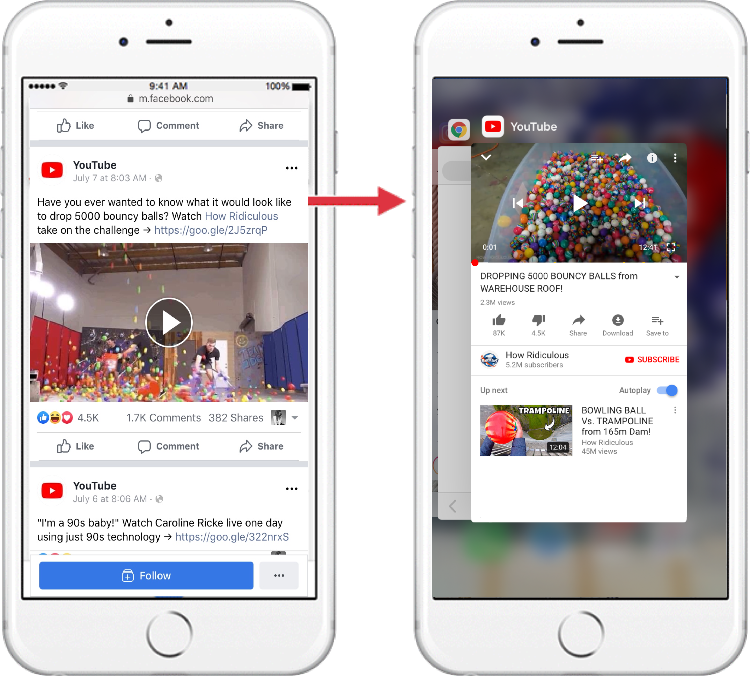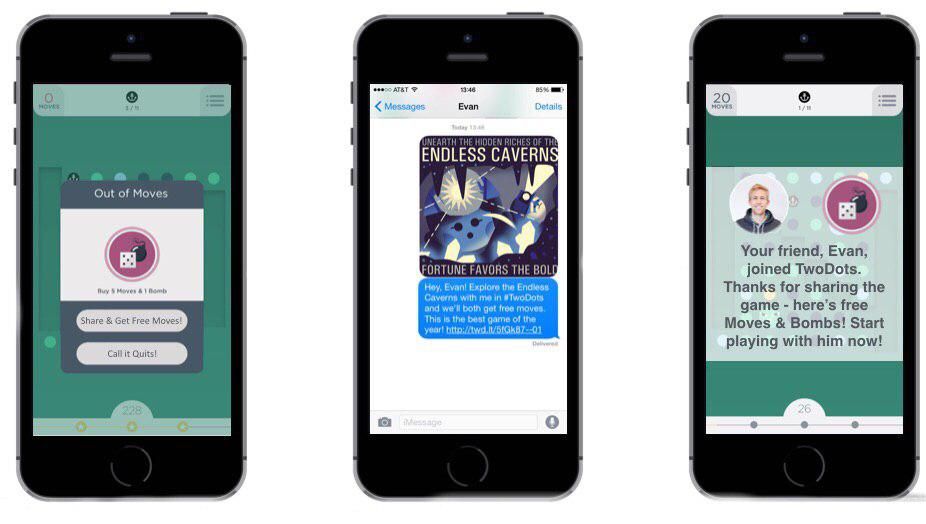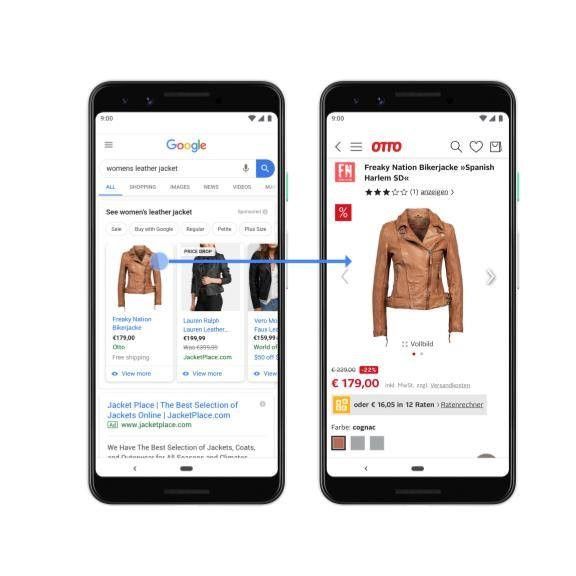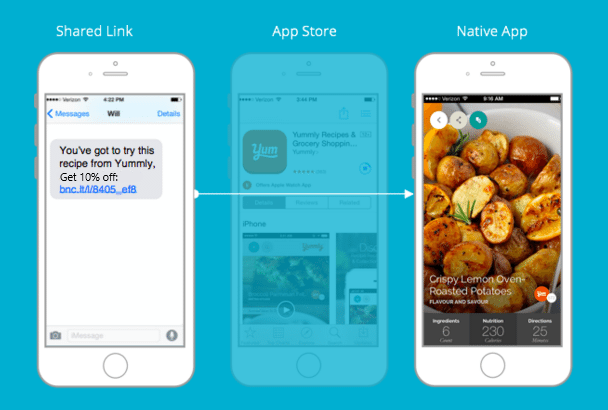A problem that bothers mobile app developers is making links on the mobile platform as reliable as on the web. When clicking a link on the web, a page with the necessary content is opened. In the mobile world, things are not that simple. It is deep linking that redirects users from a URL to a specific screen of a mobile app.
When using an ordinary link, a page with the needed content is opened in a mobile browser rather than the mobile app. Deep links allow you to perform better. Imagine that you are developing an eCommerce application. Say you launched a sale for shoes and the purpose is to redirect customers to the mobile app page with shoes after clicking a link. Deep links handle this task best.
The social networks and SMS are limited with the number of characters, so you may get stuck when sharing a deep link. It is where short deep links come in handy. In addition to improving the user redirection, you apply short links that help to avoid the “length problem.” Today, on the Short.cm blog, we’ll walk you through 5 use cases on how to apply deep links.
1. Sharing Posts on Social Media
This is one of the leading and simple methods, but at the same time, it provides installation growth. With the help of deep links, you significantly improve the results and attract a streamline of app installations.
Let’s take an application for watching videos as an example. Many people shared their favorite videos with friends on social media, but the first impression for new users was terrible. Before the company has implemented deep links, the user who clicked the link on social media had to install the application, register in it, and find the necessary video manually. That was the reason for the massive outflow of users.
To solve this problem, the company took up deep linking. Now, after installing the application, the user immediately gets to the page with the desired video. This significantly decreased the number of users who left the installation.

2. Inviting Friends
Sending an invitation to friends is one more way to attract new customers. Most likely, just making the mechanism of the invitation without any motivation or encouragement will not make sense. There is a small chance that someone suddenly will decide to invite his or her friend, or someone will install a new application for no reason.
Deep links provide an opportunity to reward the current user for inviting a friend; a new user—to install the application. Consider the example of the mobile game. When using deep links, it is possible to create unique links for each user.
Share short deep links with bonus points, which will be given to users after a successful install. A reward motivates users to install a game. After clicking the link and registering, the new user immediately gets to the discount screen, and the current user receives a notification that his or her friend has installed the app.
Such a method attracts new users and increases brand trust.

Source: Branch
3. Launching an Ad
You no longer need to promote your app as a whole. Instead, advertise a feature or product within your application. Also, offer a discount coupon or other encouragements.
When using deep links, apply paid ads for a specific product. For example, promote a certain feature of your app or an item. After clicking on an advertisement, a user will be transferred to the App Store or Google Play. When installing an application, a page with a specific product or feature will be opened.
Woohoo! You’ve deep linked your ads.

Source: GoogleAds
4. Applying Email Marketing.
Most of the links from the email redirect users to a website. It would be convenient to redirect customers to the specific page of an app instead, depending on the email’s content.
This will ensure high-quality interaction thanks to good in-app conversion. Besides, the application often has a wider range of functions compared to the adaptive version of the site.

Source: AppsFlyer
5. Using SMS Marketing.
Sending deep links in SMS marketing is an effective way to motivate users to install the application. Let’s take a shopping app as an example. Share short deep links with bonus points, which will be given to users after a successful install. Once a deep link is opened, it will launch the app on the relevant operating system. If it’s not installed, a needed store will be opened.
When new users launch the app for the first time, they will be redirected to the table with a product and an offer. Without deep links, these steps require a manual process of searching for the app, entering a promo code.

Source: Branch
Wrapping Up
Short deep linking is a valuable tool that you should include in your strategy. With it, you will significantly increase the usability of your application and, as a result, attract more customers. This is not a time-consuming investment, but it will provide you with good impressions in the form of the flow of new users.
How to Start Deep Linking on Short.cm
LearnWhat did you learn?
- mobile app deep linking;
- deep linking ios;
- deep linking android;
- deep linking url shorter;
- deeplink meaning;
Read also:



Join the conversation